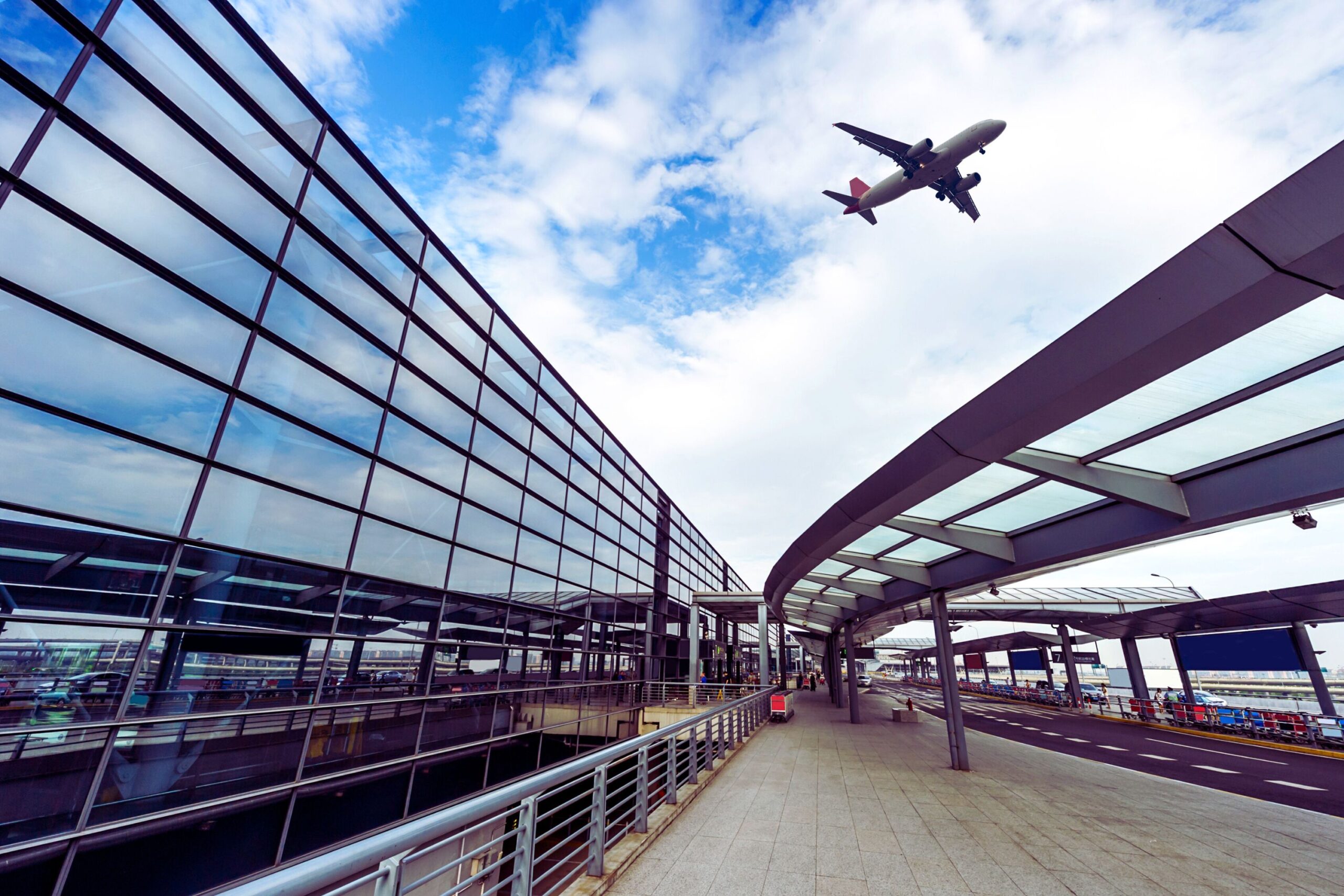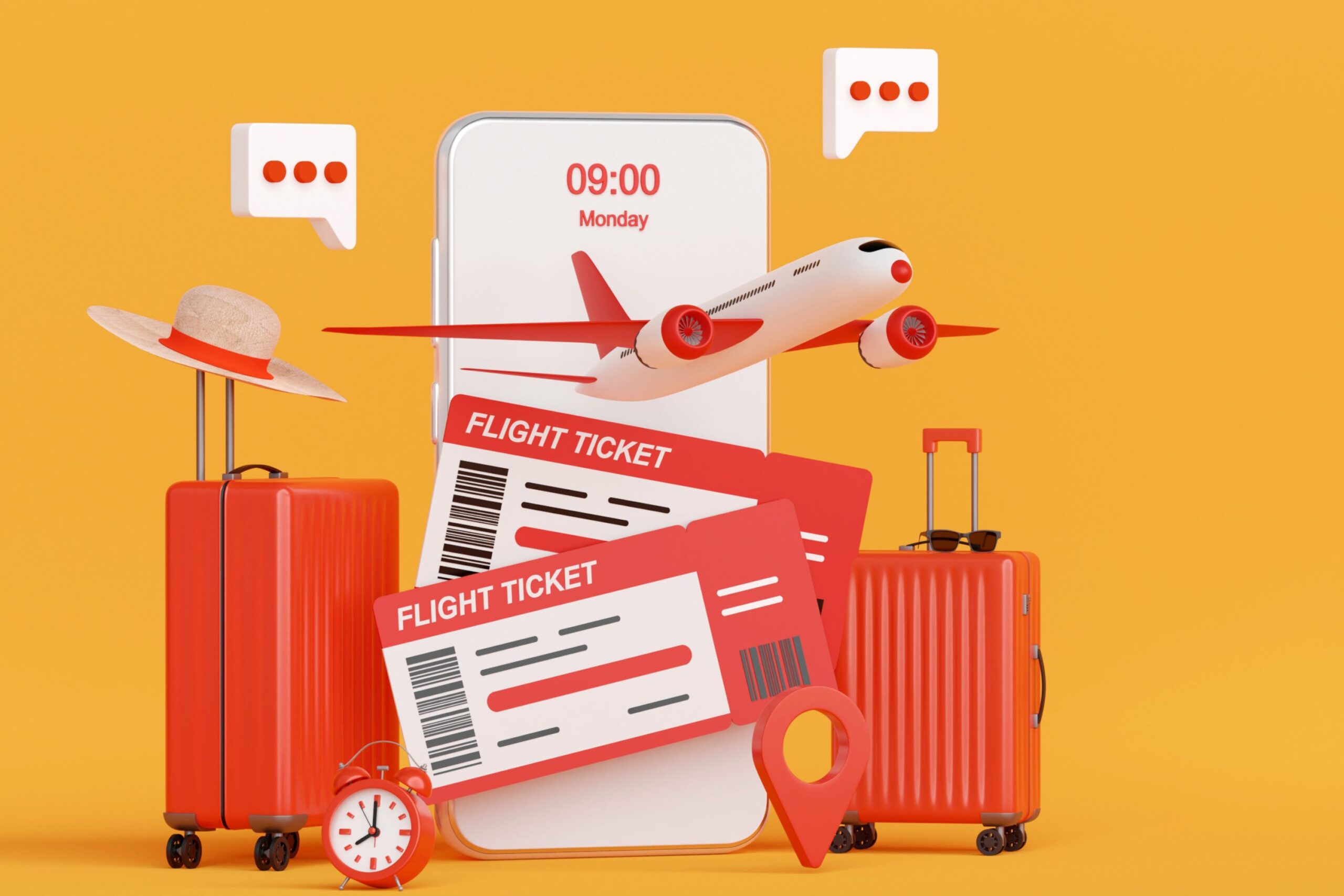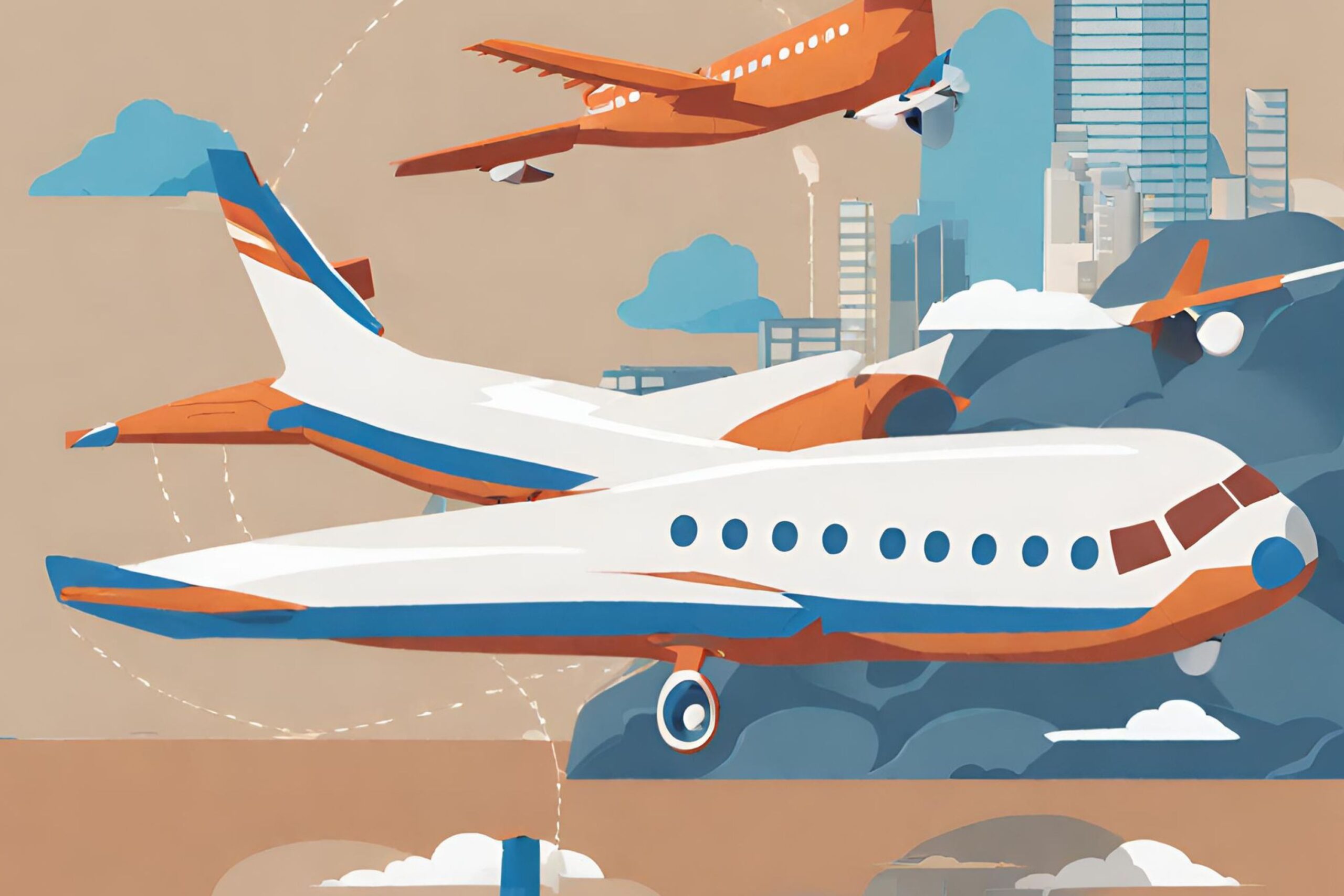International travel is an exciting endeavor, offering the opportunity to explore new cultures, savor exotic cuisines, and create lasting memories. Whether you’re a seasoned globetrotter or embarking on your first international flight, understanding the arrival procedures is essential to ensure a smooth transition from the aircraft to your destination. In this comprehensive guide, we will walk you through the intricate process of arriving on an international flight, covering everything from disembarkation to customs and immigration procedures.
Pre-Arrival Preparation
Before you even step onto the plane, some crucial steps should be taken to ensure a seamless international arrival experience.
Passport and Visa Requirements
Your passport is your primary identification document for international travel. Ensure it’s valid for at least six months beyond your intended departure date, as many countries have this requirement. Additionally, you’ll need to obtain the necessary visas for your destination. Visa requirements vary widely by country, so research the specific entry requirements for your destination well in advance. Some countries offer visa-free or visa-on-arrival options for certain nationalities, while others require you to apply for a visa beforehand.
Flight Itinerary and Documents
Keep copies of your flight itinerary, hotel reservations, and any other important travel documents in both digital and physical formats. These documents can be helpful during the immigration and customs process.
Check-In and Security
Check-in for your international flight well ahead of your departure time. Airlines often require passengers to check in at least 3 hours before departure for international flights. Ensure you have all required travel documents, including your boarding pass and identification, readily accessible for security checks.
The excitement of embarking on an international journey often begins well before you set foot on the plane. It commences with the essential processes of check-in and security checks, ensuring you’re well-prepared for your adventure ahead. Let’s delve into these crucial steps and discover how they contribute to the seamless flow of international travel.
Early Check-In: A Traveler’s Best Friend
Checking in for your international flight is a pivotal moment in your travel itinerary. It’s not merely an administrative task but a strategic move that sets the stage for a hassle-free journey. Here’s what you need to know:
Timing Is Everything
Most airlines recommend checking in for international flights well in advance, typically three hours before your departure time. This extra time accounts for the additional steps and potential delays often associated with international travel, such as longer security queues, immigration checks, and boarding procedures. Arriving at the airport with time to spare allows you to navigate these processes without stress or rush.
Multiple Check-In Options
Airlines offer various methods for check-in to accommodate the diverse needs of travelers:
- Online Check-In: This option is available through the airline’s website or mobile app. It allows you to check in from the comfort of your home or hotel room. You can select your seat, receive a digital boarding pass, and even pay for checked baggage if needed.
- Airport Kiosks: Many airports have self-service kiosks where you can check in by following on-screen instructions. These kiosks are convenient for travelers who prefer a middle ground between online check-in and traditional counter check-in.
- Counter Check-In: If you enjoy personal assistance or have specific requests, you can check in at the airline’s check-in counter. Airport staff will guide you through the process, address any concerns, and provide necessary documents.
Documents in Order
Before you start the check-in process, ensure you have the following documents readily accessible:
- Passport: Your passport serves as your primary identification for international travel. Ensure it’s valid for at least six months beyond your intended return date.
- Visa: If your destination requires a visa for entry, have it in hand, along with any supporting documents.
- Travel Itinerary: Carry a printout or digital copy of your complete travel itinerary, including flight details, hotel reservations, and any other bookings. This can be especially useful if immigration authorities request proof of your travel plans.
- Boarding Pass: If you’ve completed online check-in, have your digital or printed boarding pass ready. It will be scanned at multiple points throughout your journey.
Security Checks: Safeguarding Your Journey
Once you’ve successfully checked in, the next hurdle on your international travel checklist is security checks. These measures are in place to ensure the safety and security of all passengers. Here’s what to expect:
Security Screening
At the airport, you’ll encounter security checkpoints before entering the departure area. Be prepared to go through a series of security measures, including:
- X-ray Screening: Place your carry-on items, shoes, and belt on the conveyor belt for X-ray scanning. Laptops and liquids must be removed from your bag and placed in separate bins.
- Body Scanning: In some airports, you may be required to pass through a body scanner. This non-invasive procedure detects hidden objects and is crucial for aviation security.
- Physical Inspection: If security personnel have concerns about an item or need to resolve an anomaly detected during screening, they may conduct a physical inspection of your carry-on bags.
Liquids, Gels, and Aerosols
Remember the 3-1-1 rule for liquids, gels, and aerosols in your carry-on luggage:
- Containers must hold no more than 3.4 ounces (100 milliliters) each.
- All containers must fit in a single quart-sized, clear, resealable plastic bag.
- Each passenger is allowed one bag of liquids.
Dress for Success
Streamline the security screening process by wearing easily removable footwear and clothing. Avoid excessive metal accessories, as they may trigger metal detectors and require additional screening.
In conclusion, the check-in and security processes for international flights are fundamental to the safety, organization, and efficiency of air travel. By adhering to recommended check-in times, having your travel documents in order, and cooperating with security procedures, you pave the way for a smooth and enjoyable journey. Remember, these processes are designed to ensure your safety and the safety of everyone aboard, so embrace them as essential steps on your path to adventure and discovery.
Arrival at the International Airport
Upon arriving at your international destination, several steps must be followed to ensure a smooth transition from the aircraft to your destination.
Disembarkation
Once the plane has landed and taxied to its designated gate, the flight attendants will instruct passengers to remain seated until it’s safe to disembark. After the aircraft comes to a complete stop, follow the cabin crew’s directions to exit the plane in an orderly fashion. Be patient, as this process can take some time, especially on larger aircraft.
Cabin Crew Guidance
As you patiently await your turn to disembark, pay close attention to the cabin crew’s instructions. They play a pivotal role in orchestrating the orderly exit of passengers. Depending on the aircraft’s size and layout, there are generally two main methods for disembarkation:
Front-to-Back:
In some cases, passengers are asked to disembark from the front of the aircraft first, moving towards the back. This method is often employed on larger planes with multiple aisles.
Back-to-Front:
On smaller aircraft with a single aisle, passengers may be asked to disembark from the back, moving towards the front. This approach minimizes congestion in the cabin.
The cabin crew will inform you which method to follow, so it’s essential to listen carefully and follow their guidance. Disembarking out of turn can disrupt the process and lead to delays.
Exiting the Aircraft
Once it’s your turn to exit, proceed calmly and efficiently. Carry-on items should be stowed in the overhead bins or under the seat in front of you, as keeping the aisle clear is crucial for a smooth disembarkation. If you have any doubts about where to place your belongings, don’t hesitate to ask the flight attendants for assistance.
As you make your way to the exit, be considerate of your fellow passengers. Allow those in the row ahead of you to move ahead before stepping into the aisle. If you have a tight connection or are in a hurry, politely inform a crew member, and they may be able to assist you.
Immigration and Passport Control
After disembarking, the first official checkpoint you’ll encounter is immigration and passport control. This step is where your passport and visa, if required, will be thoroughly examined. Here’s what to expect:
Queueing
Expect to join a queue of fellow passengers, which may vary in length depending on the time of day and the airport’s traffic. Lines can move quickly, but it’s essential to have patience.
Passport Check
Approach the immigration officer when it’s your turn. Present your passport, visa, and any required entry forms. The immigration officer will examine your documents, ask questions about your trip’s purpose, and may take your photograph and fingerprints. Once cleared, your passport will receive a stamp or entry visa, granting you permission to enter the country.
Customs Declaration
In some countries, you’ll be required to fill out a customs declaration form. This form typically asks about items you are bringing into the country, including any valuable items, cash, or goods for resale. Be truthful when filling out this form, as making false declarations can lead to fines or other penalties.
Baggage Claim
After passing through immigration and customs, you’ll proceed to the baggage claim area. Look for overhead screens displaying your flight number and carousel information. Wait for your luggage to appear on the designated carousel, and be sure to verify that the baggage tag matches your claim ticket.
The Path to Baggage Claim
After successfully clearing immigration and customs procedures, you’ll follow the signs directing you to the baggage claim area. This is where the next chapter of your journey unfolds. Here’s what to expect:
Overhead Screens and Flight Information
Upon entering the baggage claim area, you’ll notice overhead screens displaying flight information. These screens typically list flight numbers and their corresponding baggage carousels. Your flight number, which you can find on your boarding pass or by referring to airport signage, will guide you to the correct carousel.
Waiting for Your Luggage
Once you’ve identified your carousel, it’s time to wait for your checked baggage to appear. Baggage carousels are conveyor belts that transport luggage from the aircraft to the claim area. Depending on the size of the airport and the number of arriving flights, it may take some time for your luggage to make its way to the carousel.
During this waiting period, you’ll join fellow passengers in eager anticipation. Some travelers choose to stand close to the carousel, while others opt for a more comfortable distance. Regardless of your choice, remain vigilant and attentive, as it’s essential to spot your luggage as soon as it arrives.
Verifying Baggage Tags
As luggage begins to circulate on the carousel, it’s vital to maintain visual contact with your belongings. Be prepared to identify your bags by their distinctive features, such as color, size, or unique markings. It’s a common practice for passengers to move closer to the carousel as they spot their luggage.
Before reaching for your bags, confirm that the baggage tag attached to each piece matches the information on your claim ticket. The baggage tag typically displays details such as your name, flight number, and destination airport code. Verifying these details ensures that you’re retrieving the correct luggage.
Lost or Delayed Baggage
In rare instances, you may find that your luggage hasn’t arrived at the carousel when the majority of passengers have already collected their belongings. If this occurs, don’t panic. Instead, follow these steps:
- Contact Airport Staff: Approach airport personnel near the baggage claim area, often found at a designated baggage service desk. They can assist you in tracking down your luggage.
- File a Report: If your luggage is confirmed as missing, you’ll need to complete a baggage claim report. This document will initiate the search for your luggage and provide a reference for further communication.
- Provide Contact Information: Ensure that the airline has your current contact information, including your local address and phone number. This information is crucial for keeping you updated on your baggage’s status.
- Keep Receipts: If you incur any expenses due to the delay or loss of your luggage, retain receipts for essential purchases such as clothing or toiletries. Many airlines offer reimbursement for reasonable expenses during such incidents.
Customs Inspection
In addition to the customs declaration form, some countries may require passengers to undergo a customs inspection. This involves having your luggage scanned or inspected by customs officers. Be prepared to open your bags if requested and declare any items that may be subject to restrictions or duties.
After an international flight, your journey doesn’t end when you leave the airplane. One of the last hurdles you’ll encounter before entering your new destination is the customs inspection process. Customs inspection is a crucial component of international travel, ensuring the safety and security of a country’s borders while also preventing the introduction of prohibited items. In this section, we’ll explore the customs inspection process in detail, helping you understand what to expect and how to navigate it effectively.
The Purpose of Customs Inspection
Customs inspection is carried out by customs officers, who are responsible for enforcing a country’s customs laws and regulations. The primary goals of customs inspection are:
- Security: To safeguard the country from potential threats, including the illegal importation of firearms, explosives, and narcotics.
- Revenue Collection: To collect duties, taxes, and fees on imported goods as required by the country’s customs regulations.
- Control of Restricted and Prohibited Items: To prevent the entry of items that are restricted or prohibited for various reasons, such as public safety, environmental protection, or cultural preservation.
Arrival at Customs
After collecting your checked baggage from the carousel and proceeding through the baggage claim area, you’ll typically encounter customs inspection just before exiting the airport or at a designated customs area within the airport. Here’s what you can expect:
Customs Declaration Form
In many countries, passengers are required to complete a customs declaration form before arriving at the customs inspection area. This form typically asks about the following:
- Any goods you are bringing into the country, including their value and quantity.
- Items that may be subject to duties or taxes.
- Prohibited or restricted items you are carrying.
- Cash or monetary instruments you are carrying, as some countries have reporting requirements for large sums of money.
Customs Officer Interaction
When you approach the customs inspection area, a customs officer will review your customs declaration form and ask you questions about the items you’ve declared. Be truthful and accurate in your responses, as providing false information can lead to penalties or legal consequences.
Luggage Inspection
In some cases, customs officers may select passengers for a more thorough luggage inspection. This can involve:
- X-ray Scanning: Your luggage may be subjected to X-ray scanning to detect any hidden or prohibited items.
- Physical Inspection: Customs officers may request that you open your luggage for a physical inspection. They will examine your belongings and may ask about specific items.
Declaring Restricted and Prohibited Items
It’s essential to be aware of the customs regulations of the country you are entering and to declare any restricted or prohibited items you may be carrying. Common examples of such items include:
- Firearms and ammunition
- Controlled substances, including illegal drugs
- Agricultural products and food items
- Endangered species and wildlife products
- Cultural artifacts and antiques
- Counterfeit goods and trademark-infringing items
Failure to declare restricted or prohibited items can result in severe consequences, including confiscation of the items, fines, or even arrest.
Duty and Tax Assessment
In some cases, customs officers may assess duties and taxes on items you are bringing into the country. The amount you owe will depend on the country’s customs regulations and the declared value of the items. Be prepared to pay any assessed duties or taxes, which are typically collected on the spot.
Cooperation and Compliance
Customs inspection is a vital step in international travel, aimed at ensuring the safety and security of a country while also facilitating the legal and orderly flow of goods across borders. By cooperating with customs officers, declaring any restricted or prohibited items, and being aware of the customs regulations of your destination, you can navigate the customs inspection process smoothly and enjoy a trouble-free entry into your new country. Remember that customs officers are there to uphold the law and protect their country’s interests, so openness and honesty are your best allies during this final stage of your international journey.
Exiting the Airport
Once you’ve collected your luggage and cleared customs, you’re nearly ready to leave the airport. However, there are a few more steps to consider:
Transportation
Arrange transportation to your final destination in advance if possible. Many international airports offer various transportation options, including taxis, shuttles, public transit, and car rentals. Research your choices and select the one that best suits your needs.
Currency Exchange
If you need local currency, you can usually find currency exchange counters or ATMs within the airport. It’s a good idea to have some local currency on hand for initial expenses like transportation and food.
Language and Local Information
If you’re in a foreign country where the primary language is different from your own, it’s helpful to have some basic language skills or translation apps at your disposal. Familiarize yourself with essential local information, such as emergency contact numbers and the location of your accommodation.
Special Considerations
While the aforementioned procedures are typical for international arrivals, there can be variations and special considerations depending on the country you’re visiting and your individual circumstances:
Connecting Flights
If you have a connecting flight within the same airport, follow the signs for “Transfer” or “Connecting Flights.” You may need to go through security checks and passport control again, so ensure you have enough time between flights to complete these processes.
Visa Extensions
If you plan to stay in the country for an extended period or need to renew your visa, research the local immigration requirements. In many cases, you’ll need to visit the local immigration office and provide necessary documentation.
Medical and Health Screening
During times of public health concerns, such as pandemics, additional health screenings may be in place upon arrival. This can include temperature checks, COVID-19 tests, or quarantine requirements. Always stay informed about the latest health regulations and be prepared for possible delays.
Conclusion
Arriving on an international flight involves a series of well-defined steps, from pre-arrival preparation to clearing immigration and customs and finally exiting the airport. While the process may seem daunting at first, careful planning and knowledge of the procedures will ensure a smooth transition from your flight to your destination.
Remember that each country may have its unique rules and regulations, so it’s crucial to research and prepare accordingly. By following the steps outlined in this guide and staying informed about your specific travel destination, you can maximize your enjoyment of international travel while minimizing any potential hassles.




